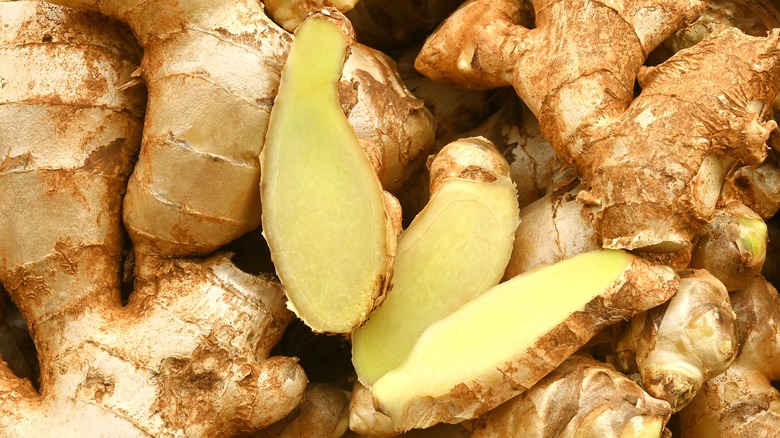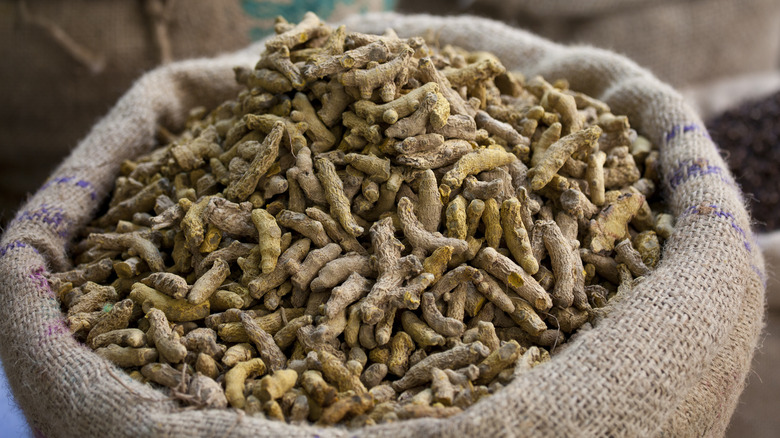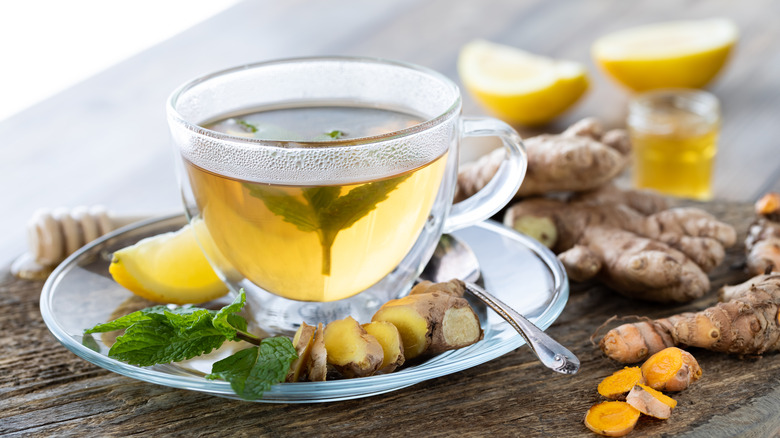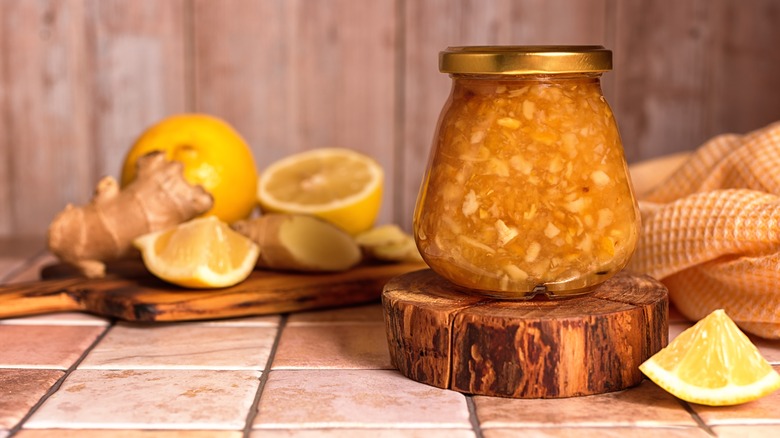Most Of The World's Ginger Comes From This Country
Whether you know it as ingefära, jengibre, or adarek, you are probaby well familiar with ginger. The spice is commonly used in sweet and savory dishes all over the globe and, for thousands of years, has been used by those in Asia and the Mediterranean to treat ailments such as nausea. According to Johns Hopkins Medicine, the root is still used for sickness today. If you're prone to motion sickness or have morning sickness due to pregnancy, odds are you've subjected yourself to oodles of ginger tea and candy to try and calm your stomach.
The National Library of Medicine states that the name "ginger" originates from the ancient Sanskrit word "srngaveram," which roughly translates to "horn root." This was most likely named as such because the spice is quite literally the root of a plant called Zingiber officinale, which is related to turmeric and cardamom. Ginger is now consumed raw, dried, pickled, preserved, candied, ground, and turned into oil in order to enjoy its pungent flavor.
Ginger in India
As it is so popular in Asian cuisine, it should come as no surprise that the Food and Agriculture Organization of the United Nations lists that a majority of the world's ginger is grown in India. The subcontinent is then closely followed by China and Nigeria in the means of production. India has taken the world's ginger production by storm because of its climate. Krishi Jagran states that ginger thrives in India, especially in the north, due to its warm, humid weather for the majority of the year. The root is one of the oldest spices reportedly grown in the country. It is now estimated that India exported 996,041 metric tonnes in 2019 alone.
As for the role ginger plays in Indian cuisine, its importance can not be exaggerated. The root has grown in India for centuries and is used as both a cure and spice. According to MasterIndian, ginger (adarek, सोंठ अदरख) is essential to making the bases of curries and ginger garlic paste; both of which are important dishes in the Indian diet.
The History of Ginger
Ginger is intrinsically tied to Indian and, on a broader scale, Asian history. Tasty Bite claims that the root itself dates back over 5,000 years and has been in the records of healers and medicinal philosophers well before the rise and fall of the Roman empire. Thanks to the hard work of archaeologists, it has been proven that ginger originated in Southeastern Asia, which is why it is so heavily reflected in their culinary culture today, used in sauces, soups, stir-fries, braises, marinades, teas, and so much more (via Indian Culture).
According to Britannica, ginger was already being traded around the Old World by the 1st century B.C. and made its way along the Mediterranean coastline. By the 11th century, it was being used in England. By the 16th century, Spanish colonizers transported and planted it in Central and Latin America to start production in the temperate climates there. World Mapper shows that today, ginger is grown throughout most of Asia and Africa, as well as in a few tropical areas of the Americas. It is enjoyed all over the world in carrot soups, ginger cakes, and even in one of our favorite cocktails, the Moscow Mule.
For the Love of Ginger
Ginger is one of those rare worldly wonders that tastes delicious and is good for you in equal measure. Healthline explains that the spice is one of the healthiest on earth and provides its consumer with gingerol. This compound has powerful anti-inflammatory and antioxidant properties, which helps to combat free radicals that may cause damage to the body. It also helps to fight nausea and osteoarthritis, and ease indigestion and menstrual pain. It sounds like ginger is the wonder spice we should all mix daily into our foods and drinks to improve our health.
The ancient people of Asia were familiar with these special properties and incorporated the root into foods like chutney or beverages like chai masala to improve their health (via National Geographic). These health benefits and the power of the spice are why ginger is so integral to Asian culture and cuisine, especially in India. According to Global Trading Magazine, India is not only the largest producer of ginger in the world, but it is also the largest consumer, beating out the second-largest consumer, Nigeria, by a landslide.



